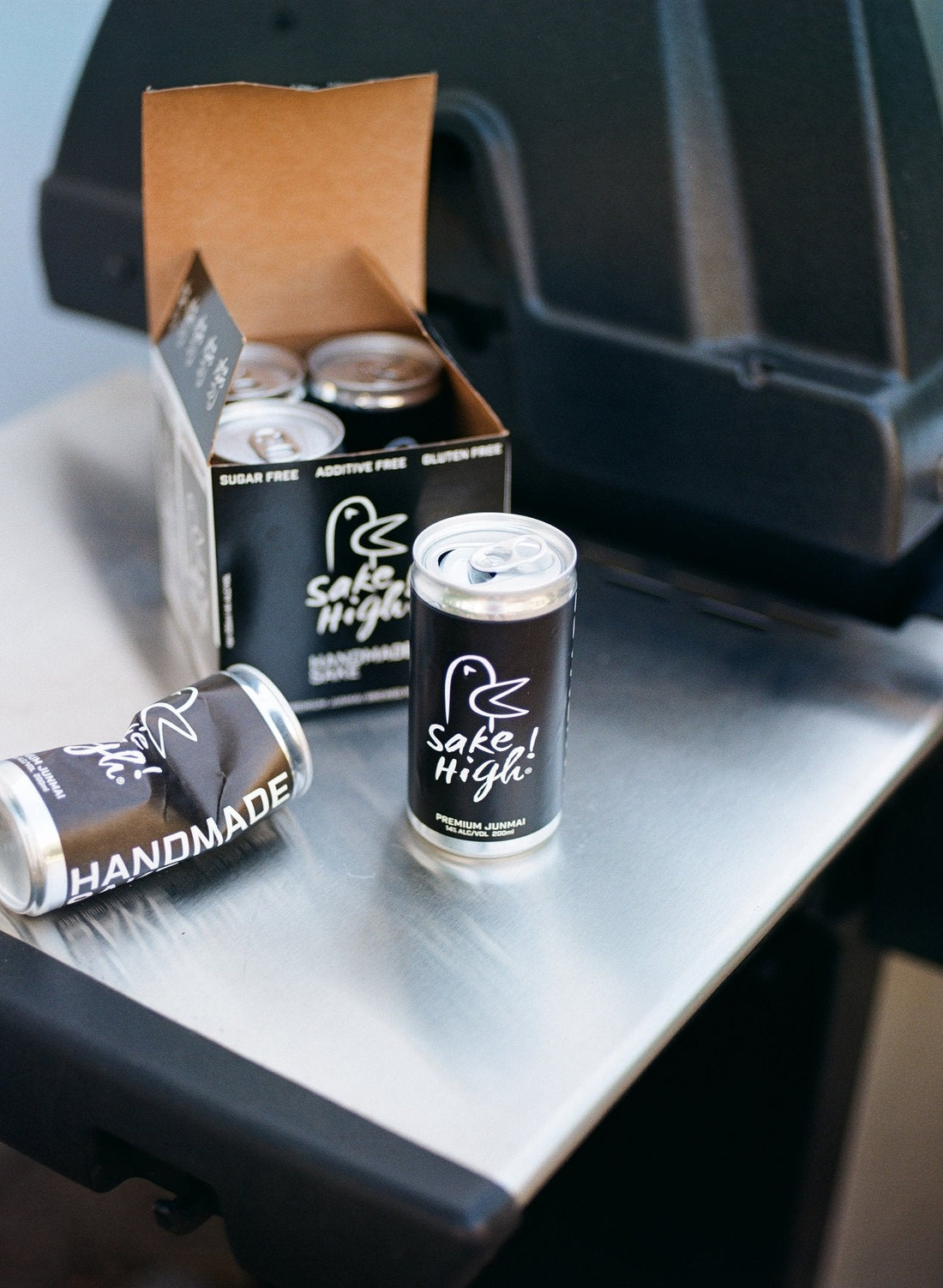
Sake 101 - What is Junmai sake?
What are the types of sake and why is Sake High! Junmai sake?
Types of sake are determined by grades based on the polishing ratio of the rice and whether or not other ingredients are added during the brewing process of sake. The more polished the rice grain is, the less of the fat and protein remaining on the rice. The two categories of sake are basic (table) sake and premium sake. Basic and Premium sake are characterized by ingredients and rice milling percentages giving the sake its taste and texture. Usually the best guideline for sake types is the lower the polishing ratio, the more premium and higher the grade of sake.
Junmai sake historically has a 70% polishing ratio (30% of the rice removed). Sake High! is a Junmai sake polished to 65%.
So why is Junmai a great sake to start with if you’re new to drinking sake? Here’s 4 reasons why we drink Junmai sake.
1. Junmai Sake is Pure.
Junmai means “pure rice”. Besides the four ingredients of sake (rice, water, koji, yeast) there is nothing added to junmai sake in the brewing process. Other sakes sometimes add high-strength distilled alcohol or use rice that is not milled. Junmai sake is characterized by 70% max. Of the rice remaining after polishing (remember Sake High! is polished to 65%).
2. Junmai Sake can be Sipped Warm and Cold.
Generally fruity and floral ginjos, daiginjos, and nama (raw/unpasteurized) sakes should be enjoyed cold and full-bodied junmais should be sipped warm. Warm sake lessens the flavor of the sake. The heat also enhances bolder sake flavors that are more coarse. Sake High! Is a Junmai sake with a fruity aroma and sweet medium body. Sake High! Is one of many Junmai sakes that can be sipped chilled or warm. Sake High! Is recommended to be sipped chilled in the can to bring out its fruit-like flavor and slightly tangy aftertaste. When pouring from the bottle, we still recommend pouring it chilled but if your personal preference is warm sake, go for it!
3. Junmai Sake is Versatile with Food.
Sake High! pairs well with just about everything! As a Junmai sake, Sake High! Is recommended for bbq, seafood, burgers, sushi, pizza, and yes, tacos! Sake compliments so many types of food because the rice flavor of the sake gives off an umami that brings out the rich flavors in meats, cheeses, and even delicate flavors of seafood and veggies.
4. More options with Junmai Daiginjō and Junmai Ginjō!
Beyond Junmai (no added distilled alcohol and 65% polishing ratio) there’s Junmai Daiginjō and Junmai Ginjō sake. Junmai Ginjō has an even highest standard of milling rate at a 60% polishing ratio, leaving 40% remaining. Even more is Junmai Daiginjō which is polished to 50%. Both are always served chilled and characterized by elegant fruity flavors.
Check out our easy breakdown of the grades below_(Need Pics)
How to Store Junmai Sake
Junmai sake (like most sakes except for nama) should be enjoyed within a year of bottling. The bottling date should be somewhere on the bottle (try looking on the screw cap) or can (bottom). It’s ok to drink it after a year but it’s likely the flavor profile changed a bit and is different than what the brewmaster (toji) intended. Junmai sake is shelf stable, store it in a cool place away from the light. If planning on consuming the sake chilled, be sure to chill the bottle in the fridge or on ice for a few hours before opening.
Ready to try Sake High!? Find it in a store near you or ship it to your home!
Sip & Read More >>
